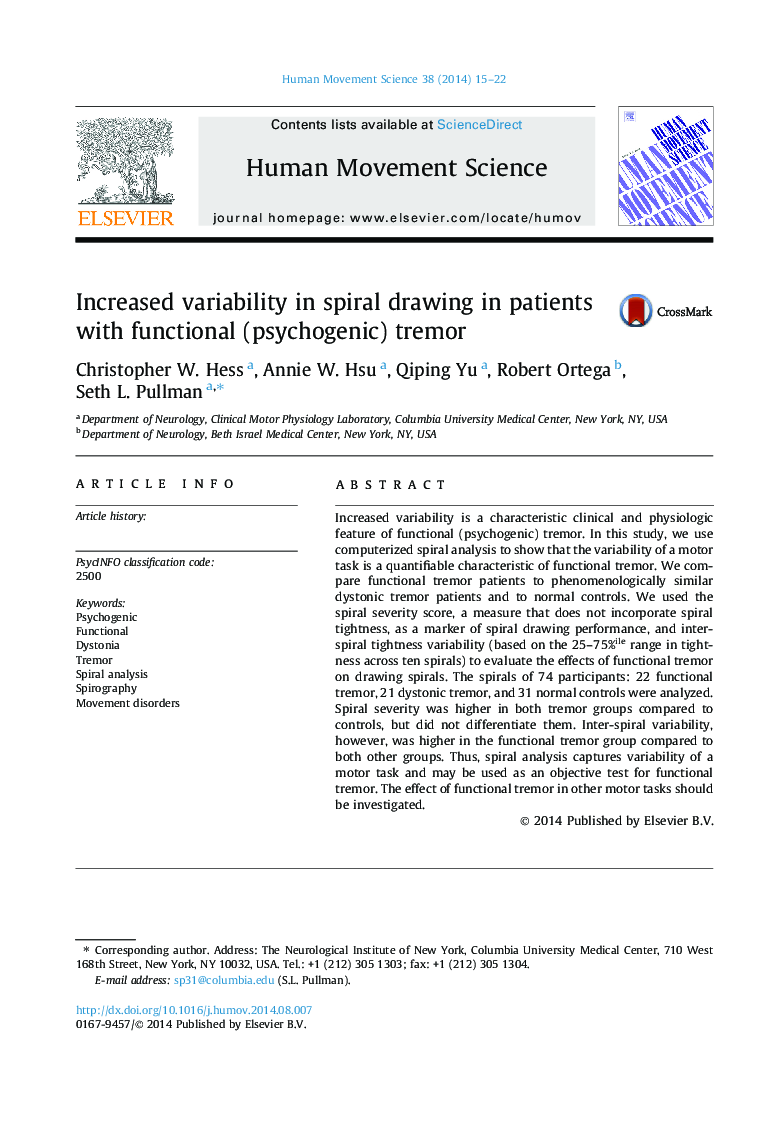| Article ID | Journal | Published Year | Pages | File Type |
|---|---|---|---|---|
| 7292220 | Human Movement Science | 2014 | 8 Pages |
Abstract
Increased variability is a characteristic clinical and physiologic feature of functional (psychogenic) tremor. In this study, we use computerized spiral analysis to show that the variability of a motor task is a quantifiable characteristic of functional tremor. We compare functional tremor patients to phenomenologically similar dystonic tremor patients and to normal controls. We used the spiral severity score, a measure that does not incorporate spiral tightness, as a marker of spiral drawing performance, and inter-spiral tightness variability (based on the 25-75%ile range in tightness across ten spirals) to evaluate the effects of functional tremor on drawing spirals. The spirals of 74 participants: 22 functional tremor, 21 dystonic tremor, and 31 normal controls were analyzed. Spiral severity was higher in both tremor groups compared to controls, but did not differentiate them. Inter-spiral variability, however, was higher in the functional tremor group compared to both other groups. Thus, spiral analysis captures variability of a motor task and may be used as an objective test for functional tremor. The effect of functional tremor in other motor tasks should be investigated.
Related Topics
Life Sciences
Neuroscience
Cognitive Neuroscience
Authors
Christopher W. Hess, Annie W. Hsu, Qiping Yu, Robert Ortega, Seth L. Pullman,
